
All categories
Featured selections
Trade Assurance
Buyer Central
Help Center
Get the app
Become a supplier

(23323 products available)



















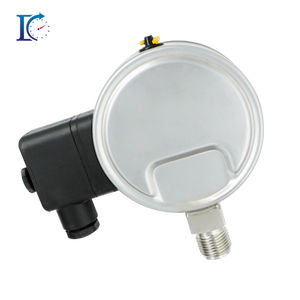
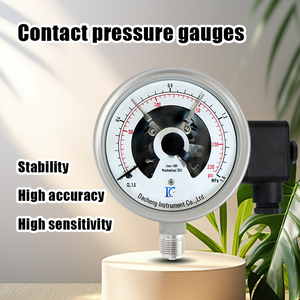






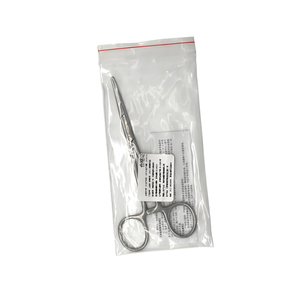








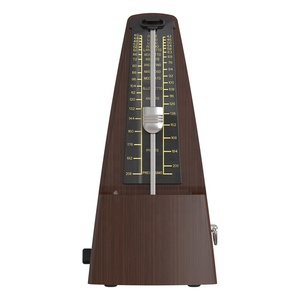
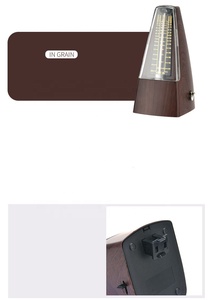


Mechanical instruments have a wide range of transformation applications because they can change one energy or signal type into another. Their wide application is due to their precise nature of operation. Some of the various types of mechanical instruments include the following:
These devices are applied in measuring small strains of deformed objects. When attached to such objects, any change in length of the object changes the electrical resistance of the strain gauge. Strain gauges have numerous applications in construction engineering as well as in the aviation and automobile industries.
A displacement transducer converts displacement into another form of energy or signal. It works because of some physical properties of materials changing with deformation. Different types of such transducers exist based on the physical quantity they utilize, e.g., potentiometers, LVDT, strain gauges, and capacitive transducers. Displacement transducers find applications in measuring linear and angular displacement in mechanical systems.
These devices are used to measure the pressures of gases and liquids in various mechanical systems. They utilize the displacement of elastic elements to convert pressure into an equivalent mechanical movement. Various industrial applications exist concerning liquid and gas pressure monitoring in pipelines, boilers, and reactors.
As the name suggests, temperature sensors are used to sense temperature. Such detection is important in mechanical systems since they help maintain critical operating conditions. In certain mechanical systems, going beyond a certain temperature can lead to devastation. Moreover, its main function is to convert temperature into resistance or an electrical signal. This feature accommodates its wide use in industries like processing, manufacturing, and automotive.
Mechanical instruments have various industrial applications, which include:
In mechanical engineering, these instruments are used to measure and monitor mechanical quantities such as force, pressure, and temperature. Mechanical gauges, e.g., mechanical fuel gauge, help prevent equipment failure by providing real-time readings during operations and thus promoting mechanical systems' optimal performance and safety.
In the aerospace industry, they are used for navigation, aerodynamic measurements, and monitoring flight parameters. Instruments like altimeters, airspeed indicators, and inertial measurement units provide crucial data for pilots and flight control systems. These devices help ensure safety and efficiency in aviation.
Certainly, the mechanical instruments used in the manufacturing industry include quality control measurement devices. These mechanical quality measurement devices, such as calipers, micrometers, and mechanical gauge set products, are used to measure dimensions, tolerances, and surface finish. It ensures that products meet the required standards during production.
The automotive sector has also widely employed these instruments. For instance, they are used in vehicle diagnostics and performance management and measure speed, fuel levels, and engine pressure. Mechanical devices include brake testers, tire gauges, and mechanical boost gauges, which ensure vehicles operate safely and efficiently. Additionally, it plays an important role in monitoring critical parameters during engine tests/reviews to ensure they meet safety and performance standards.
The mechanical instrument in the marine industry is applied in navigation, depth measurement, and environmental monitoring. Sailboat pressure gauges, for example, measure water pressure and temperature, providing essential data for navigation and fleet operations. They also help to ensure the safety of operations at sea and comply with environmental regulations.
Mechanical instruments are prevalent in the construction industry and measure the mechanical quantities of works in construction. Examples are pressure gauges that measure the load and strain in critical infrastructure. These tools also provide measurements, ensuring structures are built according to design specifications and reducing the risk of failure.
Several parameters and features should be considered when purchasing a mechanical instrument, as follows:
Range and Accuracy
The measurement range is the span of measurable values an instrument can handle, while accuracy refers to how close a measurement is to the true value. Always ensure the instrument's range will accommodate the target value in its application. Similarly, the degree of accuracy required in the application will also determine the appropriate instrument to use.
Resolution
Resolution is the smallest increment a mechanical instrument can detect. For pressure or fuel gauges, high resolution is always desirable to enable more precise measurement. This feature is particularly important in applications requiring fine-tolerance adjustments.
Environmental Conditions
Environmental conditions are a key consideration in mechanical instruments because they can sometimes be exposed to extreme operating conditions. Check the instrument's operating temperature range, humidity resistance, etc. For example, pressure gauges and temperature sensors have seals and special materials to prevent any damage from moisture, dust, or extreme temperatures.
The steps for installing a mechanical instrument in any vehicle vary with the type of instrument in question. Below are general steps for some common mechanical instruments:
Mounting
The first thing to mount any instrument is to find a suitable location for the mount. A mounting location should be such that the instrument is easily visible and accessible. At the same time, the mounted area should be free of any potential interferences. For example, a mechanical boost gauge should be mounted directly on the dashboard or boost vacuum manifold to find the correct readings. Find a flat and secure place to mount the instrument.
Vehicle Tubing/Line Connection
Connect any open end of the tubing or lines to the main open line from the vehicle. Ensure the connection is secured using a hose clamp. If the mechanical instrument has a sender unit, thread it through the hole and secure it using lock nuts.
Wiring
If the mechanical instrument has electrical components, power and ground wires should be connected to the battery or any switch. To install a mechanical oil pressure gauge, plug the electrical connector into the back of the gauge and secure the gauge in the instrument.
Calibrate
Calibration is done to ensure that the instrument reads accurate values. Calibration is done by comparing the instrument's readings with those of a known reference. For example, calibrate a mechanical fuel gauge by measuring the fuel level and ensuring the readings correspond.
Regular Cleaning
Since mechanical instruments can be exposed to harsh working environments, it's ideal to clean them regularly to remove dust, debris, and other contaminants that could affect their functionality. For example, regularly clean digital psis gauges in vehicles for effective functioning.
Check for Wear and Tear
Check for wear and tear on key components like bearings and seals. Worn-out parts reduce accuracy and, therefore, need to be replaced as soon as they show signs of wear and tear.
Calibration
Mechanical instruments, over time, lose their precision and accuracy and thus need regular calibration to keep them in check. Also, calibration helps to boost sturdiness for a longer time.
Lubrication
Lubricating the moving parts of mechanical instruments minimizes friction and wear, thus extending their life. Lubricate only the manufacturer's recommended lubricants in the manufacturer's suggested intervals for lubrication.
As previously mentioned, quality and safety are crucial when dealing with mechanical instruments because they directly affect the instrument's performance, reliability, and durability as well as the user's safety. Now, let's take a look at some of the quality and safety measures for mechanical instruments:
Materials Used
In the materials used to manufacture the instrument, quality materials are usually tougher and more resistant to wear and tear. For example, premium-grade stainless steel, bronze, and carbide are corrosion and wear-resistant. They will ensure the strain gauges, pressure gauges, and fuel gauges are durable even under extreme conditions.
Precision Engineering
Precision engineering is crucial; it determines the level of accuracy with which a mechanical instrument measures a parameter. High-quality mechanical instruments, such as mechanical oil pressure gauges, are manufactured using precision machining equipment and hence drastically reduce the possibility of error.
Quality Controls Checks
Quality control checks are mandatory at each stage of the production process, from sourcing raw materials to post-manufacturing testing. They involve inspecting the gauge's accuracy, calibration, resolution, etc., using special equipment and techniques. They also reduce the number of defective products that get out to consumers.
Handling and Installation
There are certain guidelines to ensure safe handling and installation of mechanical instruments and avoid any hazards during the process. Thus, while installing or handling any part of the mechanical instrument, one should wear appropriate PPE, disconnect the vehicle battery, and wait for some time before trying to fix, as some vehicles are equipped with capacitors.
Operating Procedures
Mechanical instruments are meant to be operated by following the manufacturer's instructions. That includes not exceeding the recommended limits of pressure or temperature, regularly checking for signs of wear and tear, and not using the instrument in an unsafe environment.
Maintenance and Monitoring
Regular checks and, simultaneously, maintenance of the mechanical instrument go hand-in-hand with safety. Regular check and maintenance identify any defects or issues that might develop into a safety hazard. So, it is advised to always wear safety precautions, such as safety glasses and gloves, before handling a mechanical instrument.
A1. Mechanical instruments, which work without electricity, use mechanical parts to provide readings. People use them to obtain measurements. For instance, they measure pressure, distance, force, acceleration, weight, etc. Examples of mechanical instruments include mechanical fuel gauge, mechanical boost gauge, manometers, and calipers.
A2.A mechanical key instrument is an instrument where a mechanical key is used as an input device, enabling users set specific parameters into the system. It can also refer to any instrument with key mechanical features or parts vital for its operation. In the mechanical field, such areas include stress and pressure key measurements.
A3. A mechanical instrument works by converting a physical quantity into a mechanical movement. That involves a pointer or dial indicating the measured quantity. Some instruments have a transducer that converts physical measurements into electrical signals.
A4. There are several benefits of mechanical instruments. For one, they are very useful in taking measurements in places where electronic instruments cannot be used. They do not need any source of power. They can give readings very quickly, hence the name 'instantaneous.' They are also resistant to harsh environments like extreme temperatures, dust, and moisture.